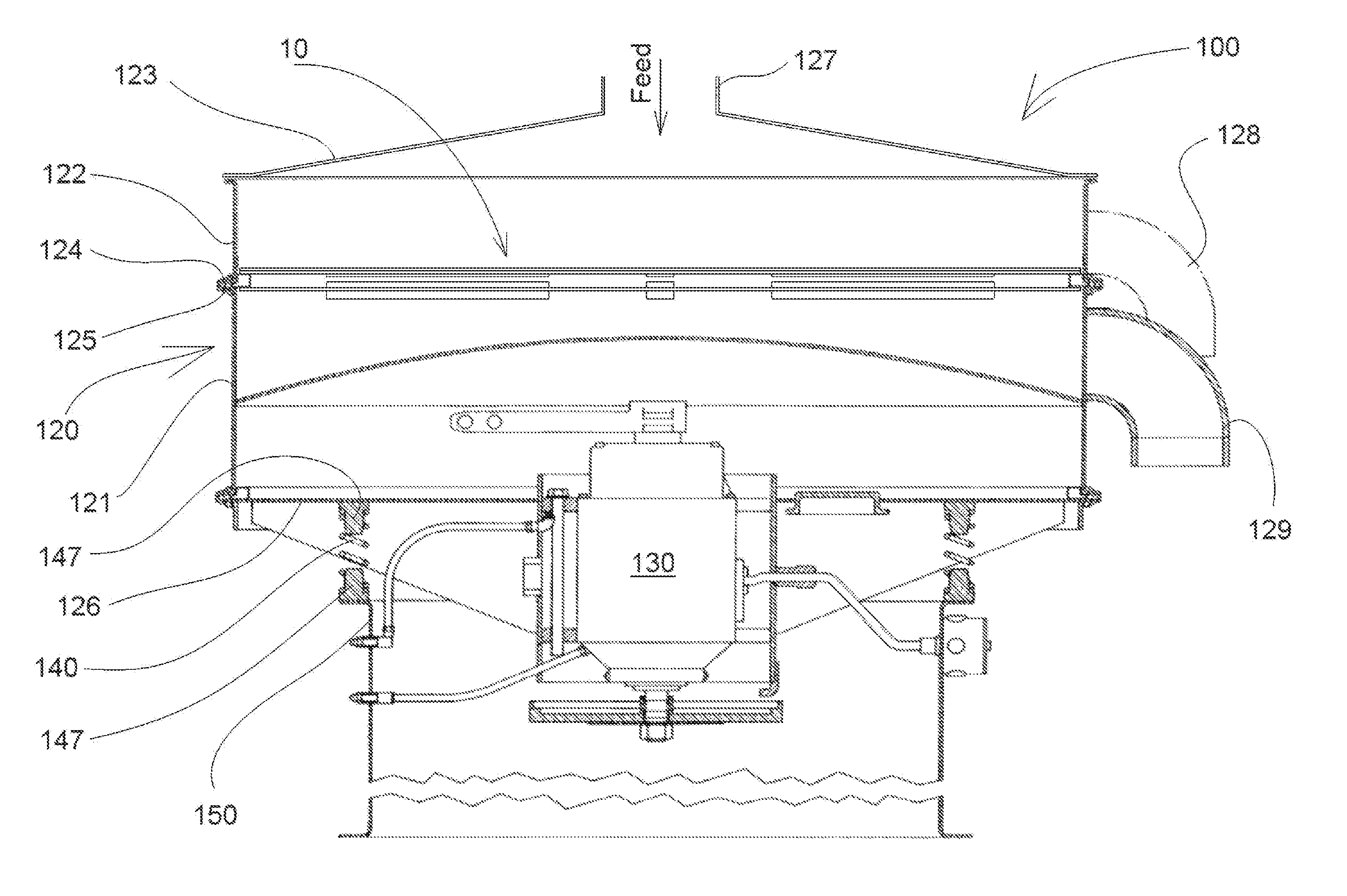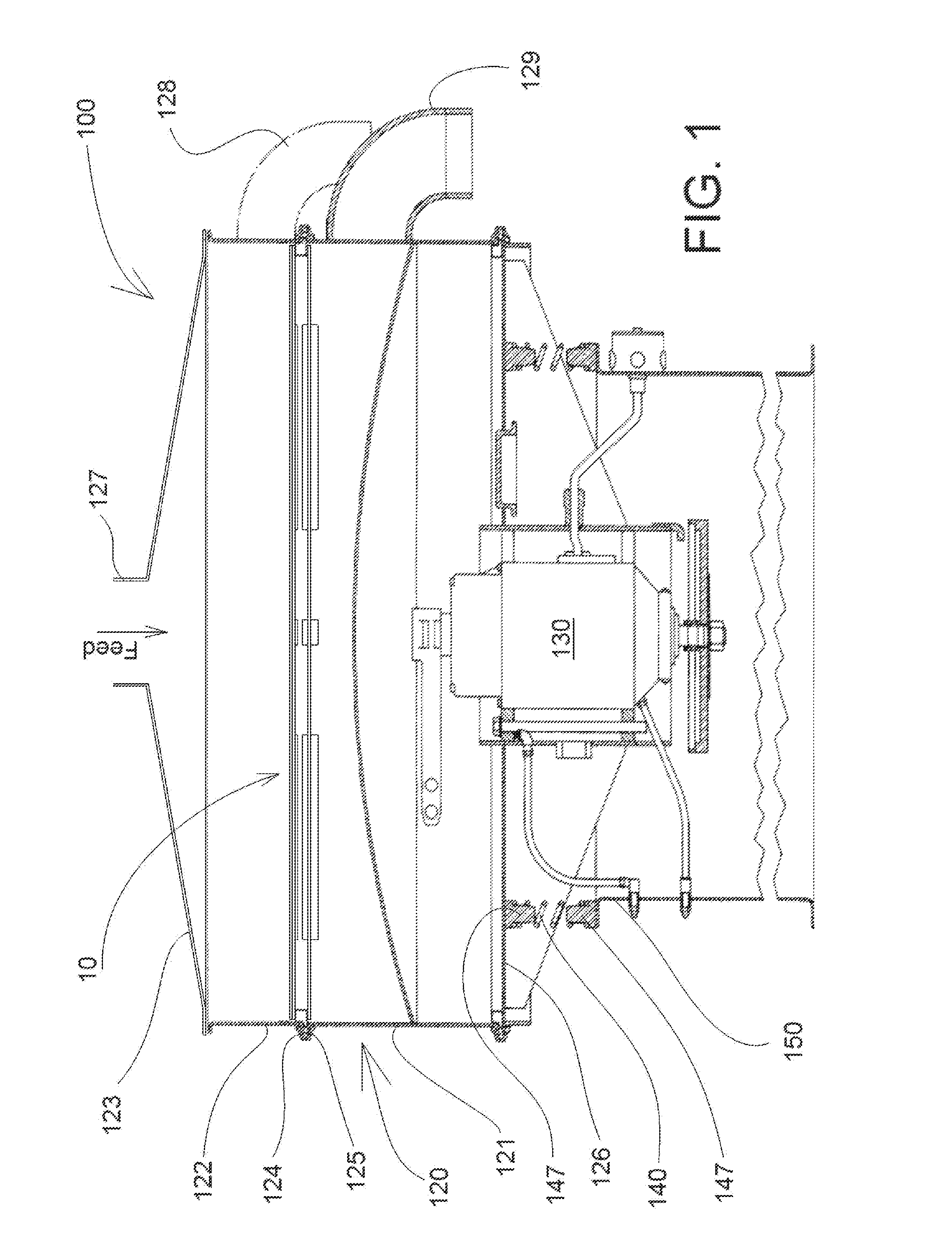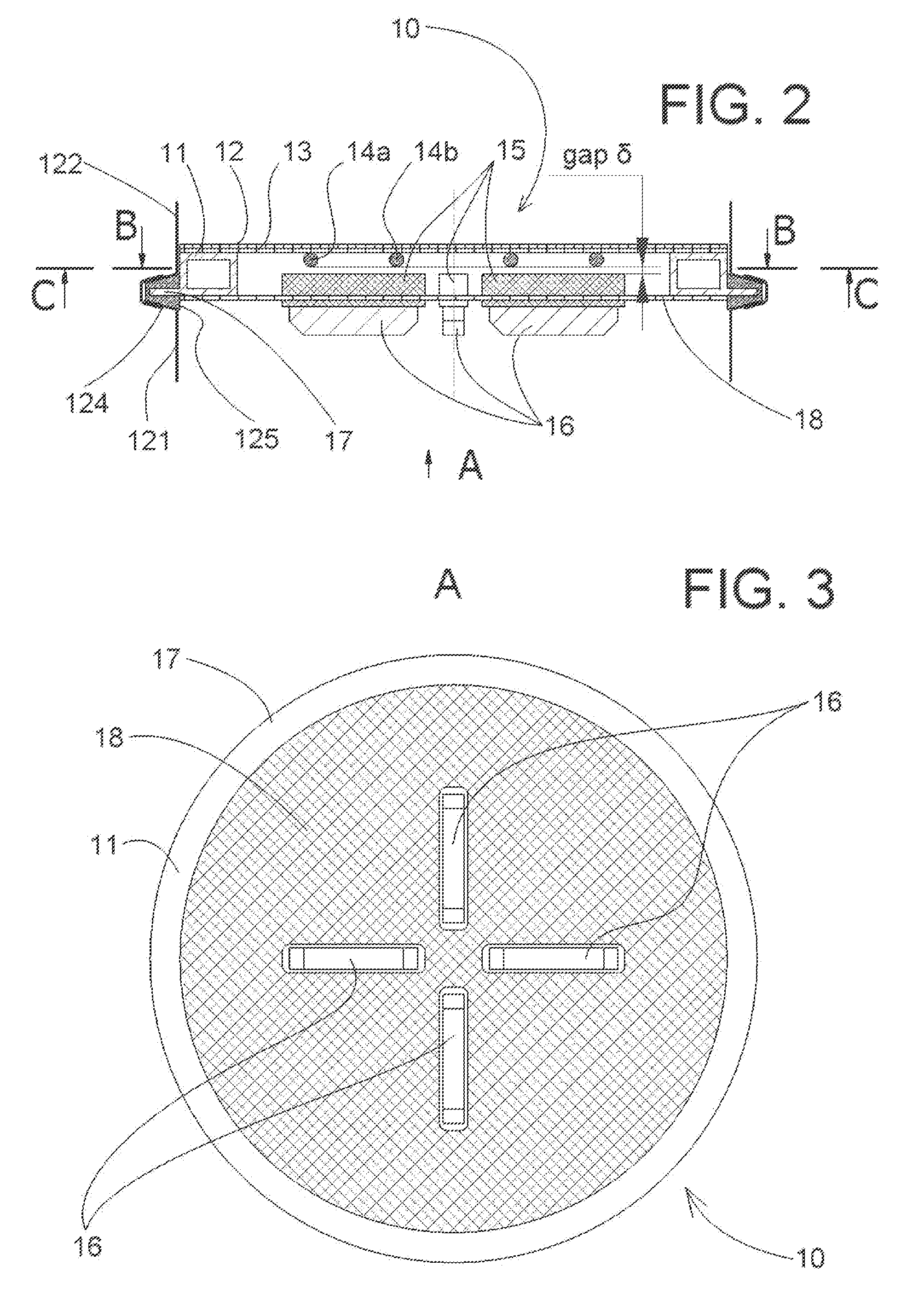Multifrequency Sieve Assembly for Circular Vibratory Separator
a vibratory separator and multi-frequency sieve technology, applied in the direction of sieving, solid separation, screening, etc., can solve the problems of low energy transfer to the sieve, material agglomeration, and ineffective conventional vibratory and tumbler separator methods and devices applied to certain materials
- Summary
- Abstract
- Description
- Claims
- Application Information
AI Technical Summary
Benefits of technology
Problems solved by technology
Method used
Image
Examples
Embodiment Construction
[0056]Referring now to FIG. 1, there is shown a typical one motor circular vibratory separator, referenced generally 100, driven by a single frequency centrifugal vibrator motor 130, however, employing multifrequency self-cleaning sieve assembly, referenced generally 10, constructed and operative in accordance with a preferred embodiment of the present invention. The present invention is intended primarily for screening of powder and bulk materials having a tendency to agglomerate and block sieve surface, and which typically have a particle size in the range from 0.01 to 500 microns.
[0057]The separator 100 includes a vibratable housing, referenced generally 120, having a cover 123, a screen assembly 10 clamped in housing 120 between undersize shell 121 and oversize shell 122, and a vibratory motor or exciter 130, mounted onto base plate 126 of housing 120. Motor 130 is typically any suitable single frequency vibratory motor having an operating rotation speed in the range 1000-3600 r...
PUM
 Login to View More
Login to View More Abstract
Description
Claims
Application Information
 Login to View More
Login to View More - R&D
- Intellectual Property
- Life Sciences
- Materials
- Tech Scout
- Unparalleled Data Quality
- Higher Quality Content
- 60% Fewer Hallucinations
Browse by: Latest US Patents, China's latest patents, Technical Efficacy Thesaurus, Application Domain, Technology Topic, Popular Technical Reports.
© 2025 PatSnap. All rights reserved.Legal|Privacy policy|Modern Slavery Act Transparency Statement|Sitemap|About US| Contact US: help@patsnap.com



